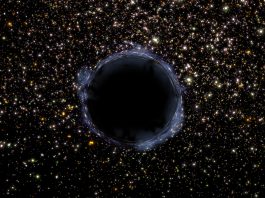The European Union has funded a new design study of the world’s largest sub-millimetre astronomical telescope.
The study, named Towards an Atacama Large Aperture Submillimeter Telescope (AtLAST), will take place over the course of three years.
“Our project paves the way for building the largest single-dish sub-millimetre telescope in the world, which will deliver the deepest and widest maps of the sky ever obtained at these wavelengths,” says Dr Claudia Cicone, associate professor at the Institute of Theoretical Astrophysics, University of Oslo, and study lead of AtLAST.
Enabling new observations of distant astronomical sources
The AtLAST project will build a single antenna dish of 50 metres in diameter. Astronomers need such large astronomical telescopes to produce high quality observations of faint and distant astronomical sources.
Researchers predict that AtLAST will be able to conduct ‘one shot’ observations hundreds of times bigger than the area seen by any existing or planned astronomical telescope. “These characteristics make AtLAST unique in the landscape of future astronomical facilities, but they also imply substantial technological challenges,” said Cicone.
To provide AtLAST with high accuracy in the sub-millimetre window, any surface imperfections on the dish cannot exceed a fraction of the diameter of a human hair. The unique acquisition speed of AtLAST, combined with its high sensitivity and spatial resolution, will enable astronomers to have a much more complete view of the sub-millimetre sky, including those faint and distant sources whose positions cannot be identified with current telescopes.
“AtLAST will take a molecular fingerprint of protostars and planets in distant regions of our Galaxy and galaxies in the nearby Universe,” adds Cicone.
New era of green astronomical telescope
Since the astronomical telescope will be located in the place with the largest solar irradiance on Earth, Atacama Desert, solar power was a first choice. “Powering an observatory such as AtLAST with renewable energy is a very ambitious goal and requires performing energy system modelling and fundamental research in the development of solutions for energy storage”, explains Cicone.
“To this aim, we are collaborating with Dr Sabrina Sartori and her team at the Department of Technology Systems, University of Oslo, who are experts in this field,” adds Cicone.
“For us, the design of the first ever conceived sustainable energy storage system solution to supply the entire needs of a telescope is an exciting challenge. The project will also be an opportunity to provide local and isolated communities with ‘clean’ electricity and possibly foster a new way of thinking for the new generations,” comments Sartori.
Interdisciplinary collaboration
The AtLAST project’s data will be transformational not only for Galactic and Extragalactic Astronomy, but also for the fields of Cosmology and Solar Physics.
The astrophysicists at the Institute of Theoretical Astrophysics will contribute significantly to the project’s scientific research activities, specifically the computational modelling and simulations of the extragalactic observations with AtLAST. The other team from University of Oslo, led by Dr Sabrina Sartori at the Department of Technology Systems, will be overseeing the environmental sustainability study of AtLAST.
Astronomer Dr Tony Mroczkowski from the European Southern Observatory will lead the antenna design study and coordinate the engineering work that will be carried out by MT Mechatronics, a German company leader in building astronomical facilities.









